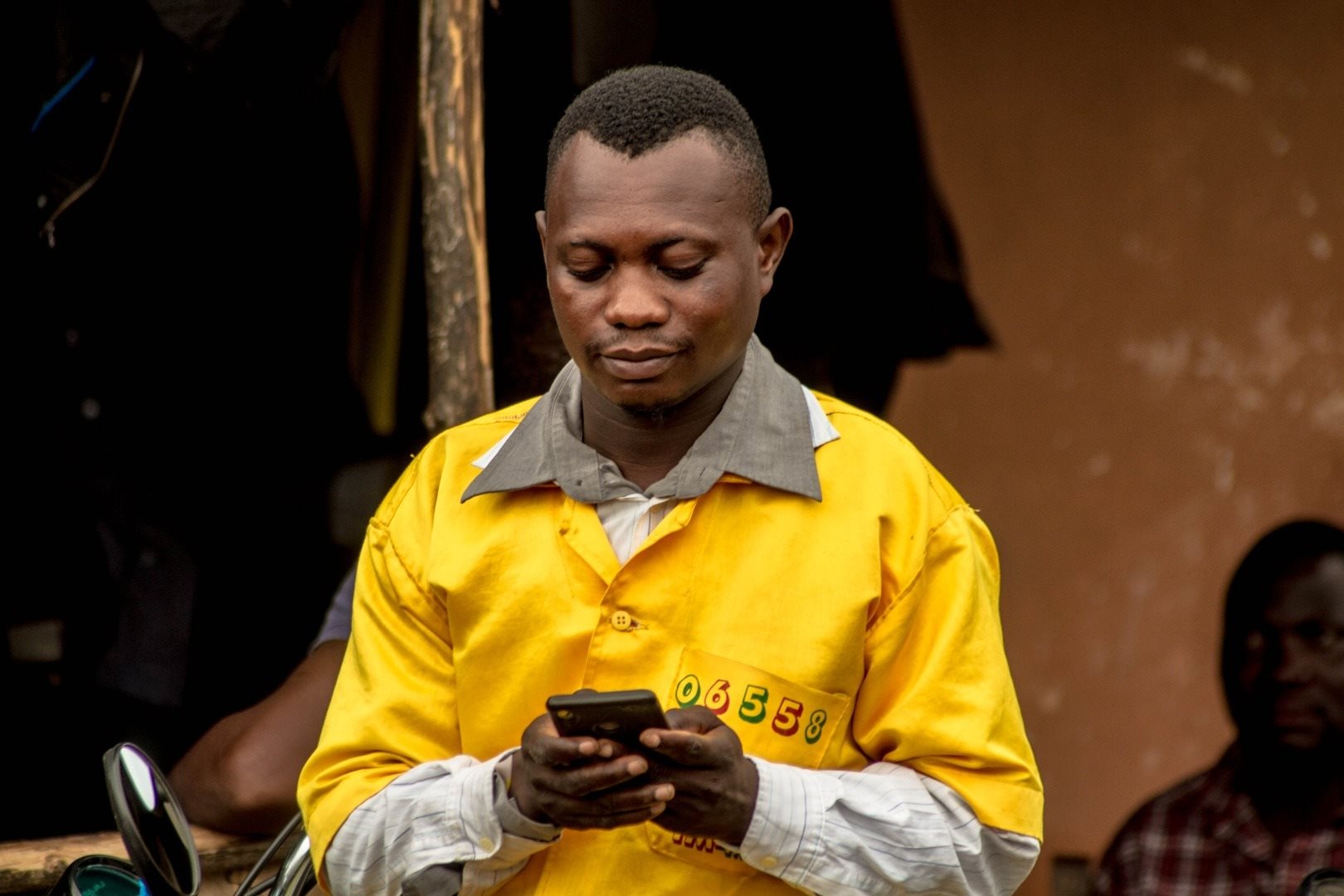Changing the habits of Zémidjans through their mobile phones - Part 1
Ruth Thiemele-Kadjo, Consultant & Lisa Chassin,Partner DFS & Financial Inclusion
PHB Development
Bery Dieye Kandji, Knowledge Management and Communication Consultant, UNCDF-MM4P
Tags

It is a special day for the Jesudegbe group of ‘Zems’ (moto-taxi drivers), as they start a third tontine cycle. Tontine is an informal savings method, usually conducted on a daily or weekly basis, which is popular among the Beninese population. The one on offer this morning is unusual in that it uses a digital solution. Surrounded by 20 members, the Chair of the tontine is signing in to an app on his smartphone.
Together, they are deciding the frequency and size of contributions and the schedule of collections. “This is our third tontine using mobile money. We started with only 10 members and a daily contribution of 500 CFA francs [less than US$1]. Now there are 20 of us, and we have doubled the contribution, so we are taking 20,000 CFA francs a day [US$34],” explains the Chair.
Group members use their mobile phones to contribute, wherever they are. The tontine managers (Chair, Treasurer and Secretary) monitor the tontine through the app. The digital tontine is provided by the operator Mobile Telephone Networks (MTN), with the support of the UN Capital Development Fund (UNCDF), through a project that aims at developing a payment ecosystem for Zems. The project, which launched in 2017 with technical assistance from the consulting firms Innate Motion and PHB Development, uses a method tested in Silicon Valley: human-centric design. This method of developing products or services puts the customer at the centre, helping in this case to develop services tailored to Zems’ needs. The project, which was developed together with the Zem community at various stages, offers two services: the payment of fares using mobile money and the creation of a digital tontine to enable Zems to save.
The 10-month pilot phase of the payment component involved 226 Zems. Nicknamed ‘Zem Chocos’ and dressed in MTN colours, the participating Zems receive payments from customers via mobile money through Unstructured Supplementary Service Data (USSD) or a Near Field Communication (NFC) device that allows ‘tap and pay.’ Fanou Sourou, a Zem Choco, mentions greater security and timesaving as the main benefits of his participation, “I don’t have problems with change for my customers anymore, and my money’s safe on my phone. I know that even if I lose the phone, I can recover my money.”
The tontine component was tested with 115 Zems, organized in 13 groups, over six months.
“A Zem does not like wasting time; every minute counts. I might start off from Cotonou in the morning and find myself in Porto-Novo or Ouidah at noon. With the digital tontine, I can send my contribution from wherever I am. Above all, I’m no longer tempted to spend all the money I earn,” confides Allaguede Wilfried, a Zem participating in the digital tontine.
With over 3,200 transactions conducted under the payment scheme and almost 8,000 under the tontine scheme, the two pilots tested the features of the digital services developed (technical reliability, ergonomics, intuitiveness, etc.) and the relevance and value of the services for Zems. The objective was both to enable Zems to adopt digital financial services, as well as to make them ‘ambassadors’ in conveying the benefits of mobile money to the rest of the population.